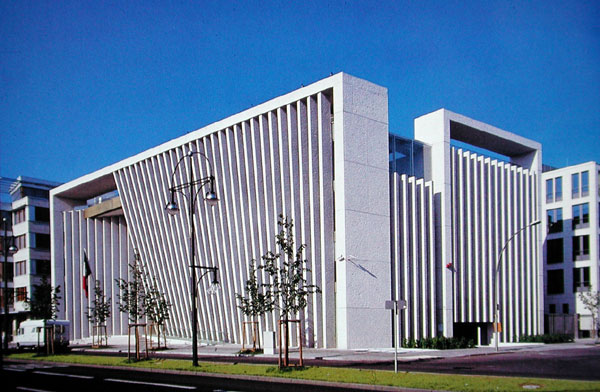
With the move of the German government and parliament to Berlin, most foreign embassies based in Bonn have had to follow suit in recent years. The Mexican embassy was no exception, and the ministry of Foreign Affairs held a competition for the design of the new building, inviting nine architects of different generations and from different part of the country to participate. Two of those invited collaborated on what would be selected as the winning project.
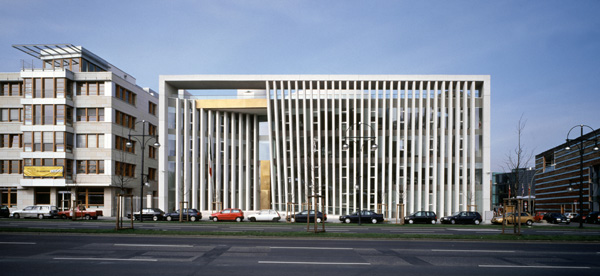
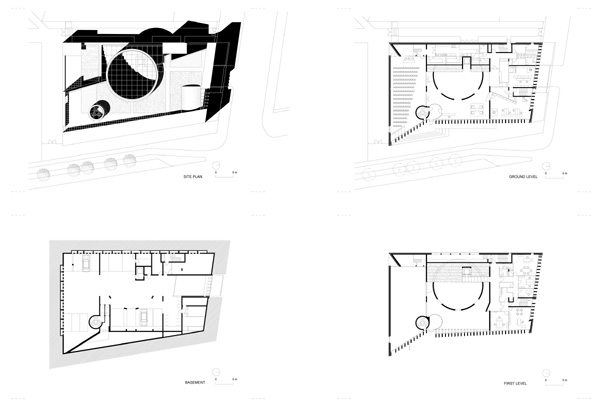
In the final years of the twentieth century Berlin consolidated its position as a center of avant-garde experimentation in the arts, and especially in architecture. The embassy therefore needed not only to fulfill its diplomatic, consular, and commercial purpose, but also to be a work of quality architecture which would reflect Mexico's cultural richness and provide a space for Mexican art.
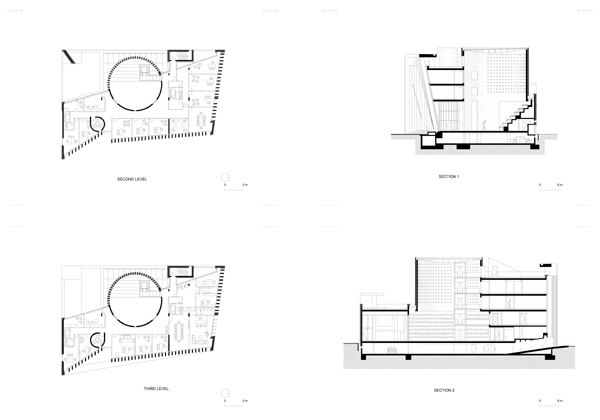
The embassy is located on a lot in the northeast corner of the so-called Klingelhöfer Triangle in what used to be West Berlin, a zone which serves to link greatly differing neighborhoods and contains both corporate and diplomatic buildings. The design follows the strict guidelines laid down in the master plan for the zone, requiring a volume 18 meters high that maintains it horizontal and vertical position on the three principal corners. The solution is an irregular body that occupies the entire block.
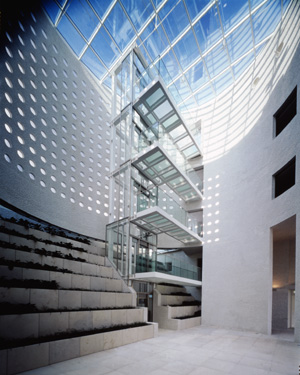
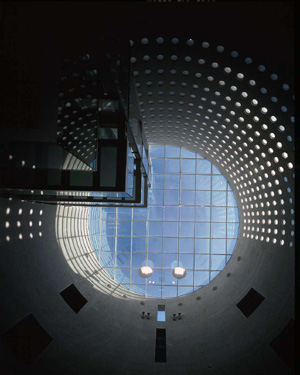
Near the center, an open cylinder rises to the sky, protected by glass. The symbolic focus of the design, this space unifies the rest of the building, containing the panoramic elevators and creating an atmosphere that isolates users from the climate of the city. The building has five stories, over which the various departments are distributed. On the ground floor are the reception area, the multi-use hall, and the library. On this same level the cylindrical volume contains a patio with a terraced garden, which can be integrated with the multiuse hall for special events. On the upper floors are the embassy proper, the consular services, and the cultural institute, while parking and services occupy the basement level.
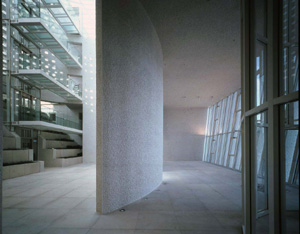
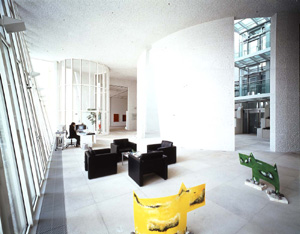
The main façade projects a striking impression of architectural plasticity: a plane with a diagonal inclination meets another at an oblique angle at the point of the entrance. These planes are of glass panes contained between white concrete structural columns. The 40 white columns create the impression of a slatted curtain. Behind this facade there is the cylindrical volume and the atrium. Α series of wide-open spaces composed of diagonals and differing heights and types of ceiling creates an interesting interplay of light and shadow.
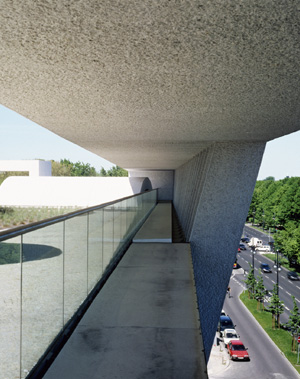
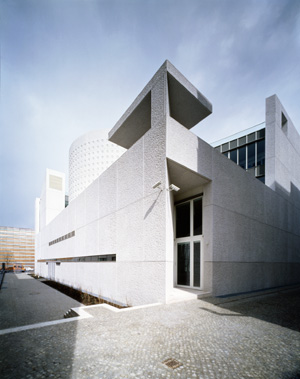
Awards:2002 Gold Medal at the Miami-Beach Biennial
2002 Silver Medal at the Seventh Biennial of Mexican Architecture, Mexico City
Projects DetailsMexican Embassy in Berlin, Germany
Architects: Teodoro González de León, J. Francisco Serrano
Collaborators: José Arce Gargollo, Oscar Rodríguez
Date of construction: 1997-2000
Client: Secretaría de Relaciones Exteriores (Secretariat of Foreign Affairs)
Associated German Firm: Assmann Beraten+Planen GmbH
Developper: Groth Gruppe (Development und Wohnbau Groth GmbH & Co. Projekt KG)
Constructor: Hochtief
Built area: 3,300m²
Plot area: 1,100m²
Photography: Bernhard Kroll and Reinhard Göerner
Information- Images: courtesy J. Francisco Serrano
http://www.greekarchitects.gr/en/public/mexican-embassy-in-germany-id3318
Architects: Teodoro González de León, J. Francisco Serrano
Collaborators: José Arce Gargollo, Oscar Rodríguez
Date of construction: 1997-2000
Client: Secretaría de Relaciones Exteriores (Secretariat of Foreign Affairs)
Associated German Firm: Assmann Beraten+Planen GmbH
Developper: Groth Gruppe (Development und Wohnbau Groth GmbH & Co. Projekt KG)
Constructor: Hochtief
Built area: 3,300m²
Plot area: 1,100m²
Photography: Bernhard Kroll and Reinhard Göerner
Information- Images: courtesy J. Francisco Serrano
http://www.greekarchitects.gr/en/public/mexican-embassy-in-germany-id3318

Δεν υπάρχουν σχόλια:
Δημοσίευση σχολίου